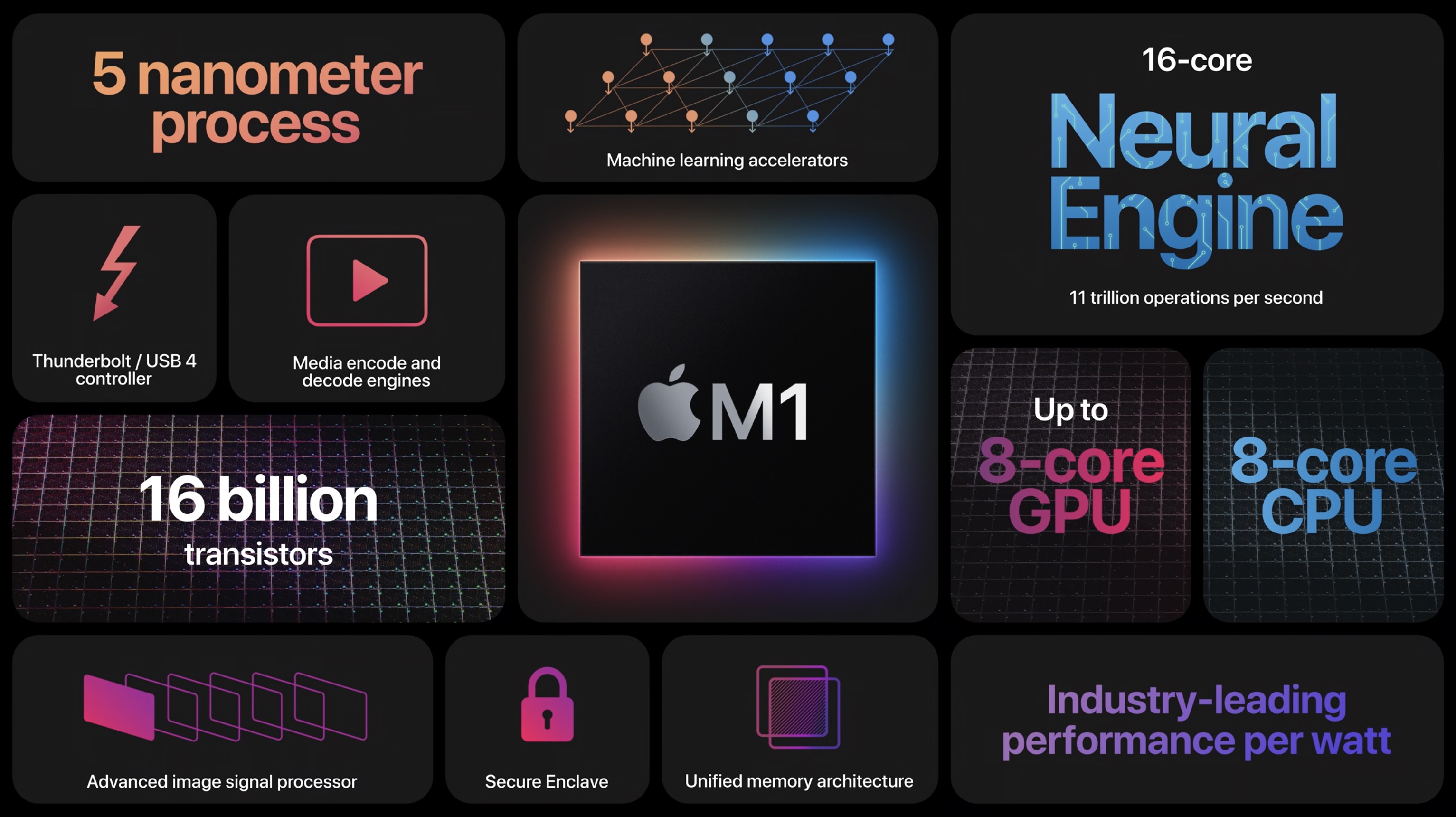I have received a 14” Macbook Pro (2021) from the team I am cooperating with, so I decided to switch from my beloved Thinkpad to try the capabilities of the new M1 PRO (8C) processor and test the current standing of ARM compatibility.
Apple’s ARMs race

Even though Apple might not be the first to deliver certain features to the market, they do steer the majority of the competition because of their market share. Apple wasn’t the first to utilize ARM processors, but since there are tons of developers behind Apple’s ecosystem, this could be the first large scale migration towards ARM-based processors.
CISC to RISC
Previously, Apple teamed up with Intel to manufacture their processors but because Intel couldn’t keep up with the competition’s manufacturing technology (7nm) and since Apple already manufactured processors for their mobile devices, they decided to ditch Intel and switched to their own chips.
Intel processors are using “Complex Instruction Set Computing” - CISC, while the new Apple chips are using “Reduced Instruction Set Computing” - RISC. The main difference between the two is how many core instructions the chip can do. When you write software, it will eventually be translated into these core instructions to be able to run on any processor. Since RISC operates with fewer instructions, a snippet of code will be broken down to a larger sum of such instructions. A RISC based processor will have a much lower power consumption but some tasks might take a bit more time to be finished. This means processing power / speed is sacrificed for power efficiency.
System on Chip
Apple silicon is not just a single processing unit, it is a “SoC” (System on Chip). It bundles a bunch of units together to be more efficient. It is a CPU, GPU, shared system memory, neural processor (Neural engine), media processor, security processor and a bunch of other things.
Having these units working closely together makes software written for these devices run much smoother.
Hardware - Did they listen to feedback?
MagSafe charging and ports are back! These were very popular features of macbooks before Apple decided to replace them all with USB-C. Also, a full sized HDMI 2.0, and the SD card reader made a reappearance.
The touchbar has been replaced with standard keys. Some users really liked and utilized the previous setup, but I like physical buttons better, even more so since Apple switched to better key mechanics in 2019.
Although I would gladly use a matte display, these new glossy XDR displays are probably the best I have ever seen on a notebook.
The same goes for the audio.
Design updates
The new rounded design, including a much better screen to body ratio (and the NOTCH) are good updates. It’s both more functional and better looking, in my opinion, than the previous gen.
